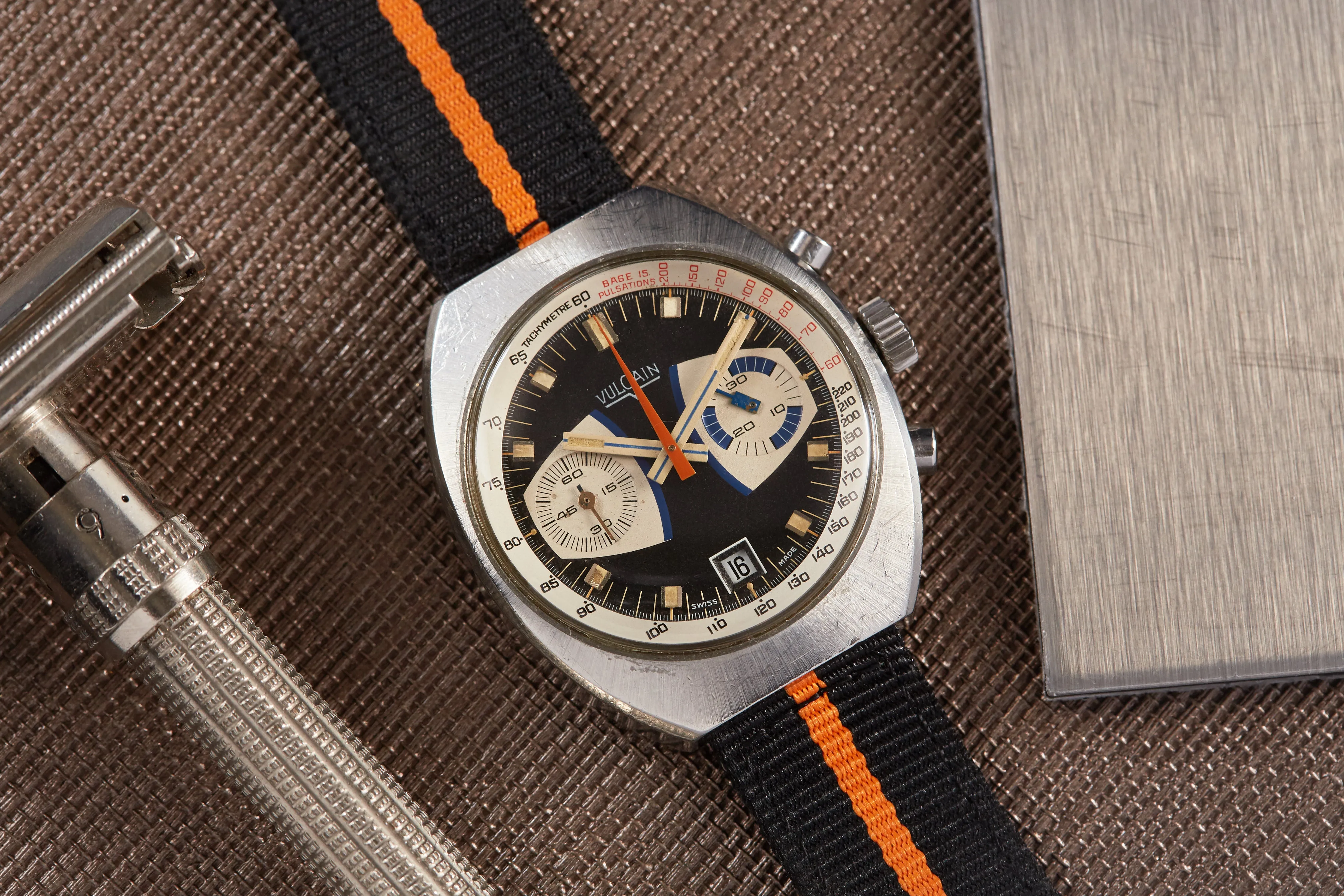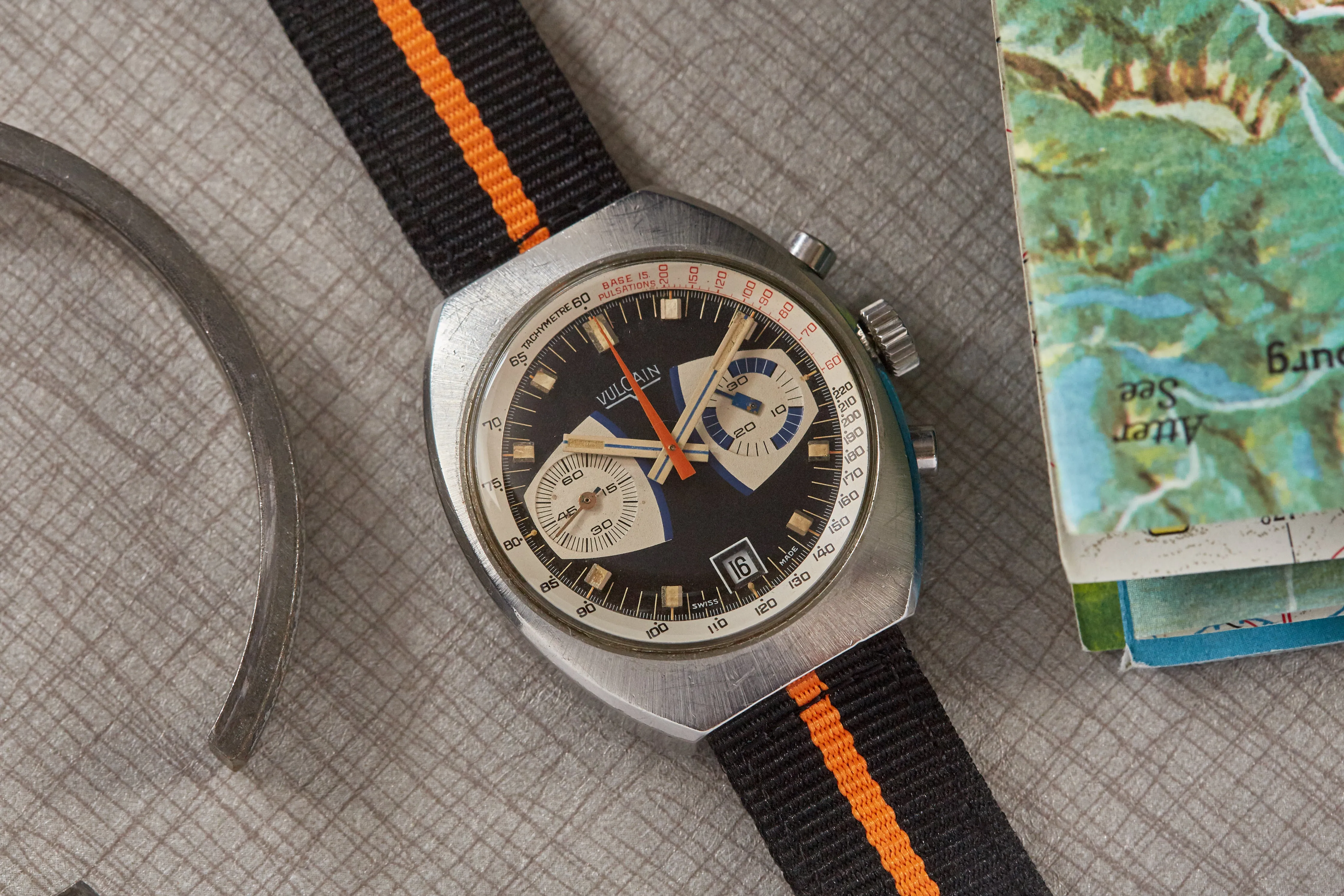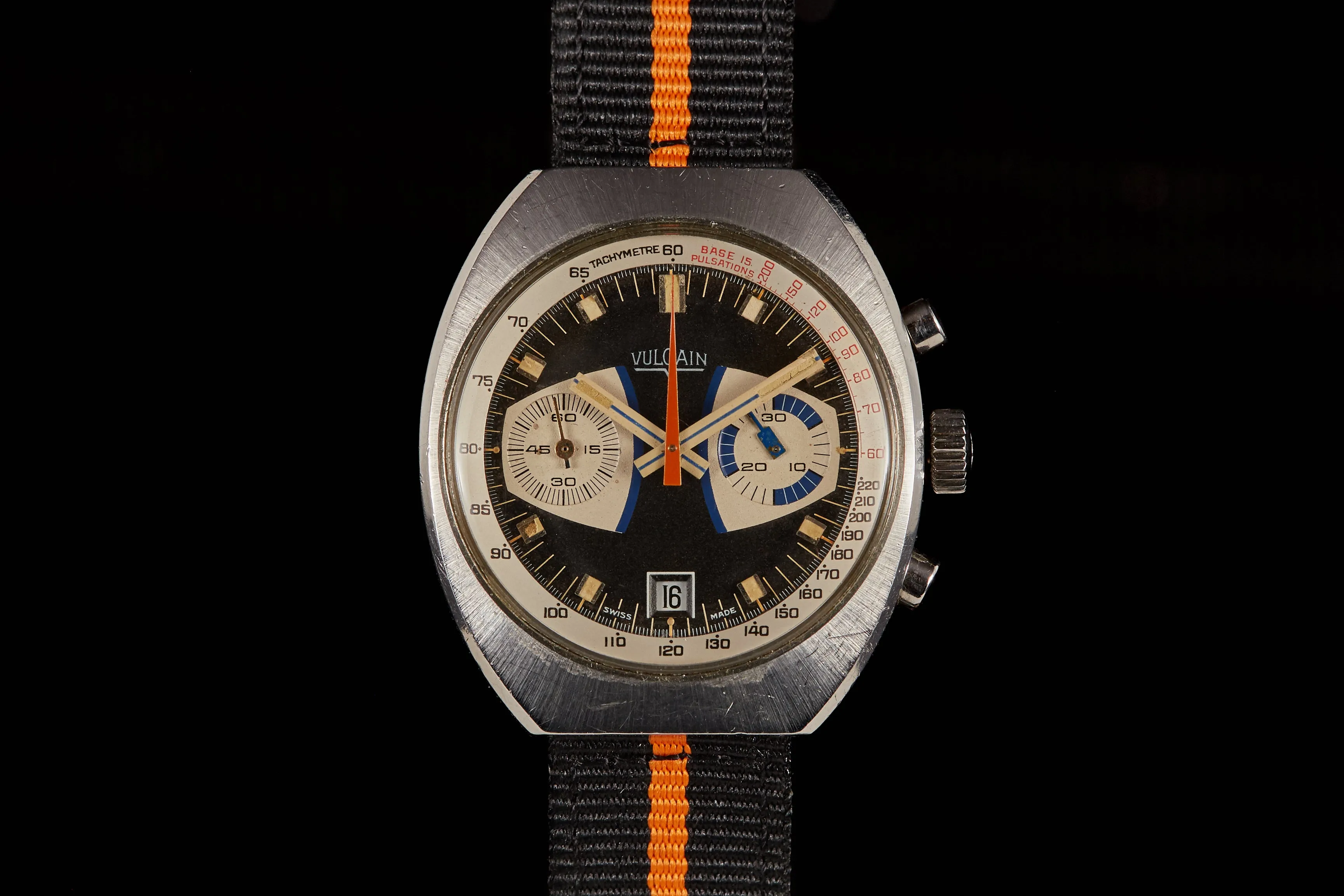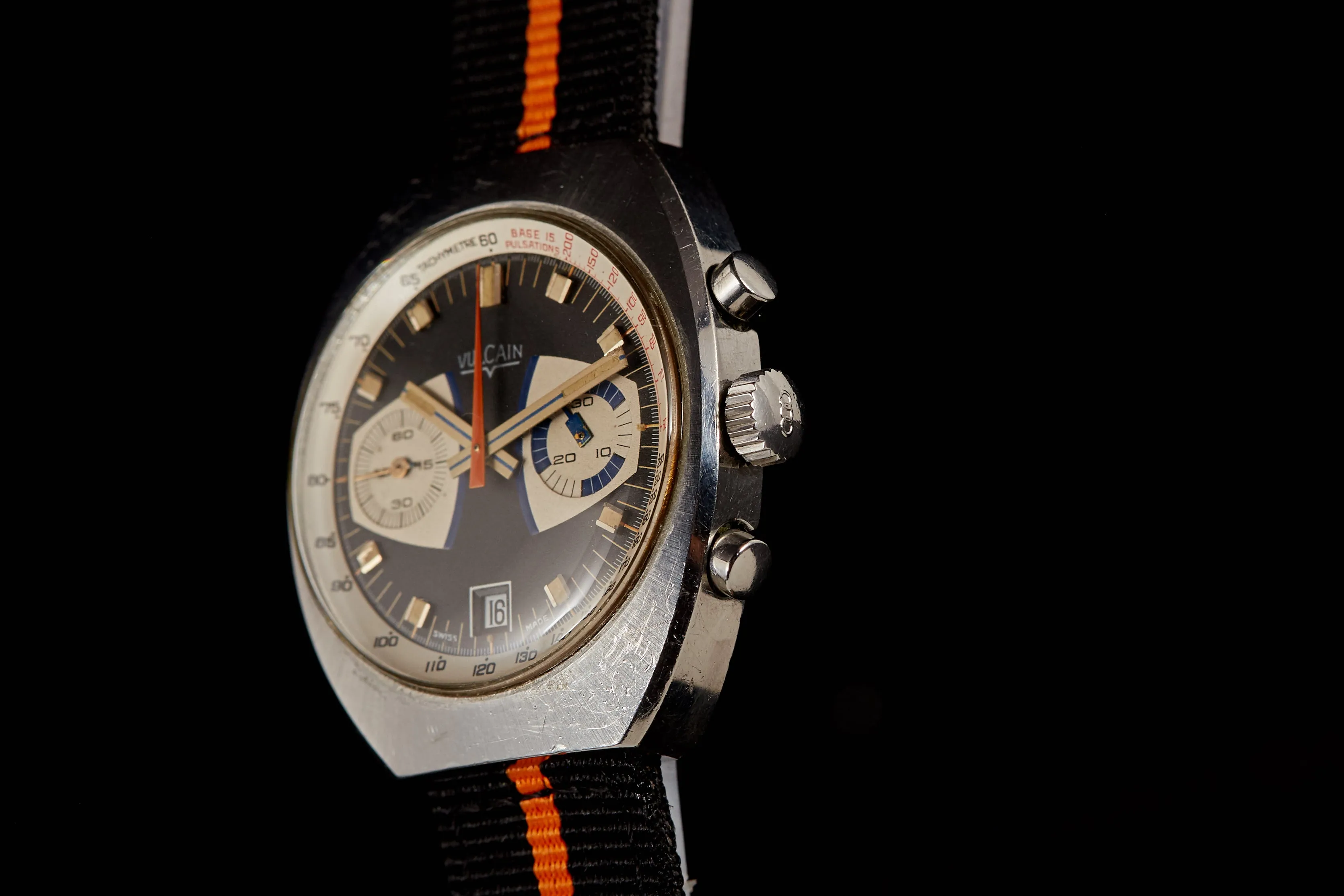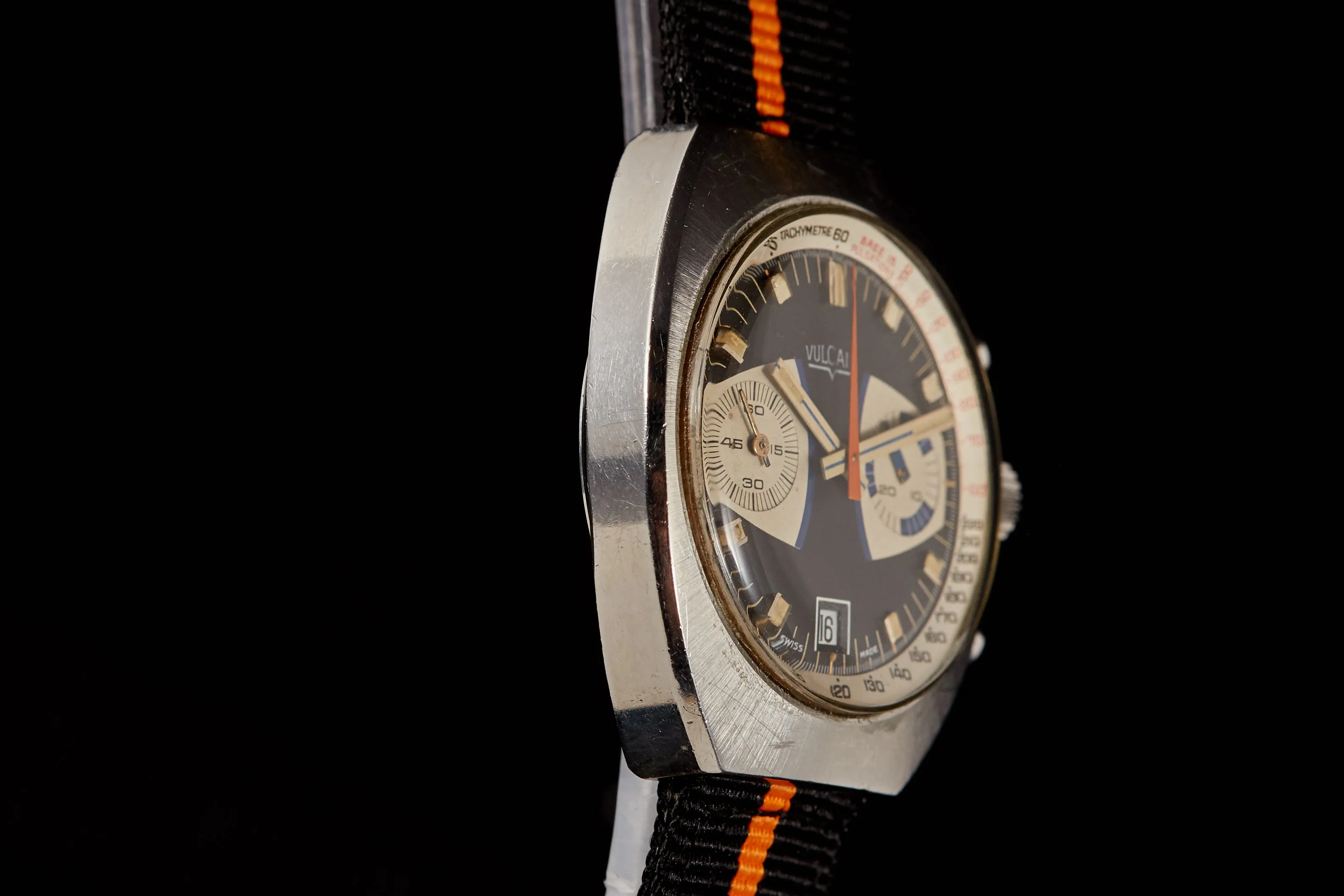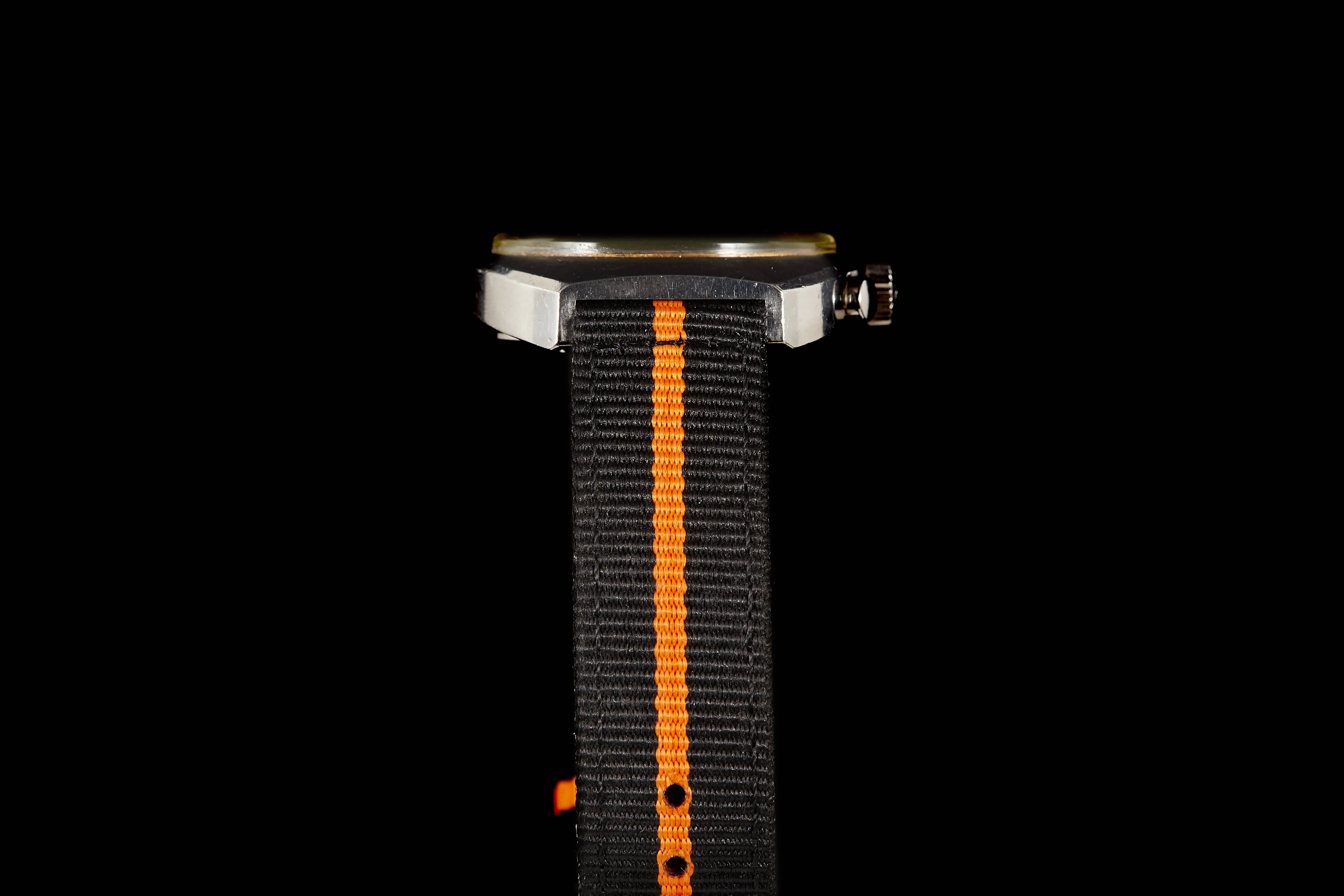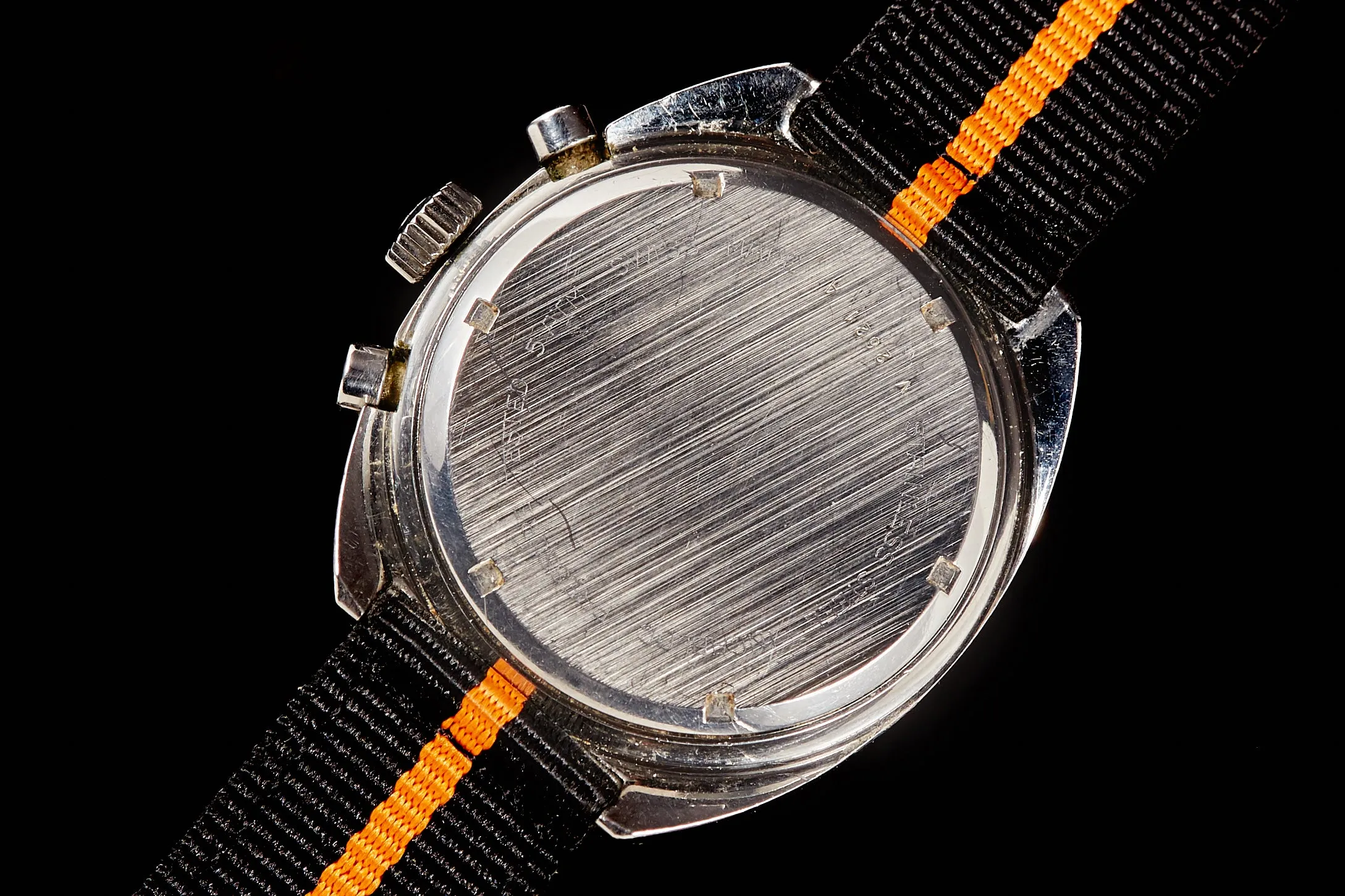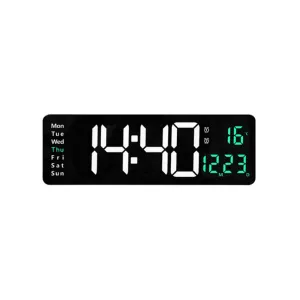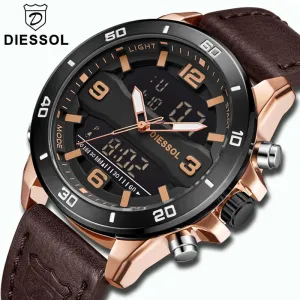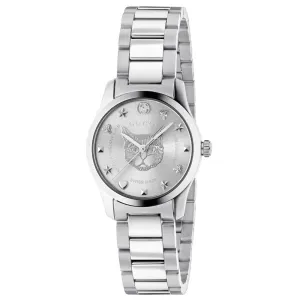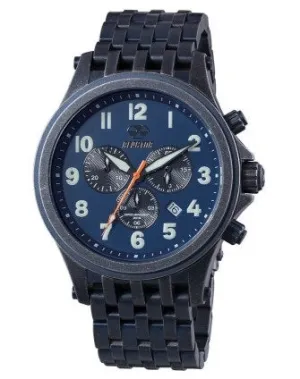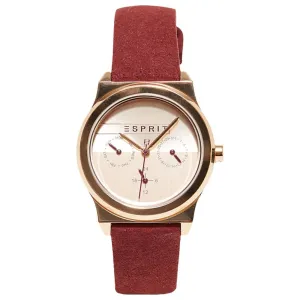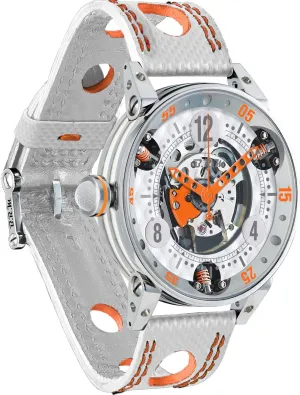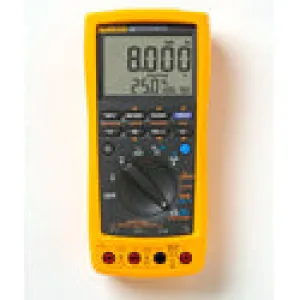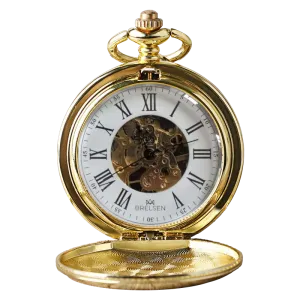Why We Love It
We know. Sometimes our descriptions of design iconography and historical significance become a little heavy-handed. Can you blame us?
So, how about this? This watch is just plain cool.
You're looking at a cushion-cased Vulcain chronograph from the 1970s - the decade of colorful, oversized sports watches that were built to be tough as nails, and are massively fun to collect.
This particular example utilizes the Valjoux 7734, the same manual-winding chronograph movement with date function that powered many of our favorite Heuer chronographs from the era. Housed in an a perfectly sized (and wonderfully comfortable!) 38mm case and fitted with barrel pushers, this colorful watch features an exotic dial with incredibly colorful design elements, appled luminous indices, orange chronograph seconds hand, and a printed inner bezel ring with printed tachymetre and pulsations scales.
The overall result is a visually-arresting watch, sporty and sharp--which will make a perfect companion for fans of exotic dial designs and racing spirit.
The Story
Vulcain is likely best known for its innovative alarm watch. While brands like developed its own wrist alarm, Vulcain is noteworthy for doing it first. Unveiled in 1947, the Cricket ranks as one of the most accurate and well-known of Vulcain's watches, and has been bestowed to almost every President since Truman.
Yet despite this lineage, Vulcain also produced other wristwatches--many of them with complications such as chronographs. The brand's founder, Maurice Ditisheim, was himself an expert in the production of complicated movements for pocket-watches. So it's no surprise that his company--named after that divine master mechanic, the god Vulcan--would produce perhaps the most versatile of complications, the chronograph.
Along with many other brands (from Hamilton to ), Vulcain utilized chronograph movements designed by famed èbauche manufacturer Valjoux. Valjoux--founded by Adolphe Nicole in 1844--specialized from the very beginning in the production of manually-wound chronograph movements. The manufacturer further changed the course of horological history by developing the first chronograph movement with a column wheel in the 1890s, a technology which would be featured in almost every chronograph until Landeron developed the cam in the late 1940s.




